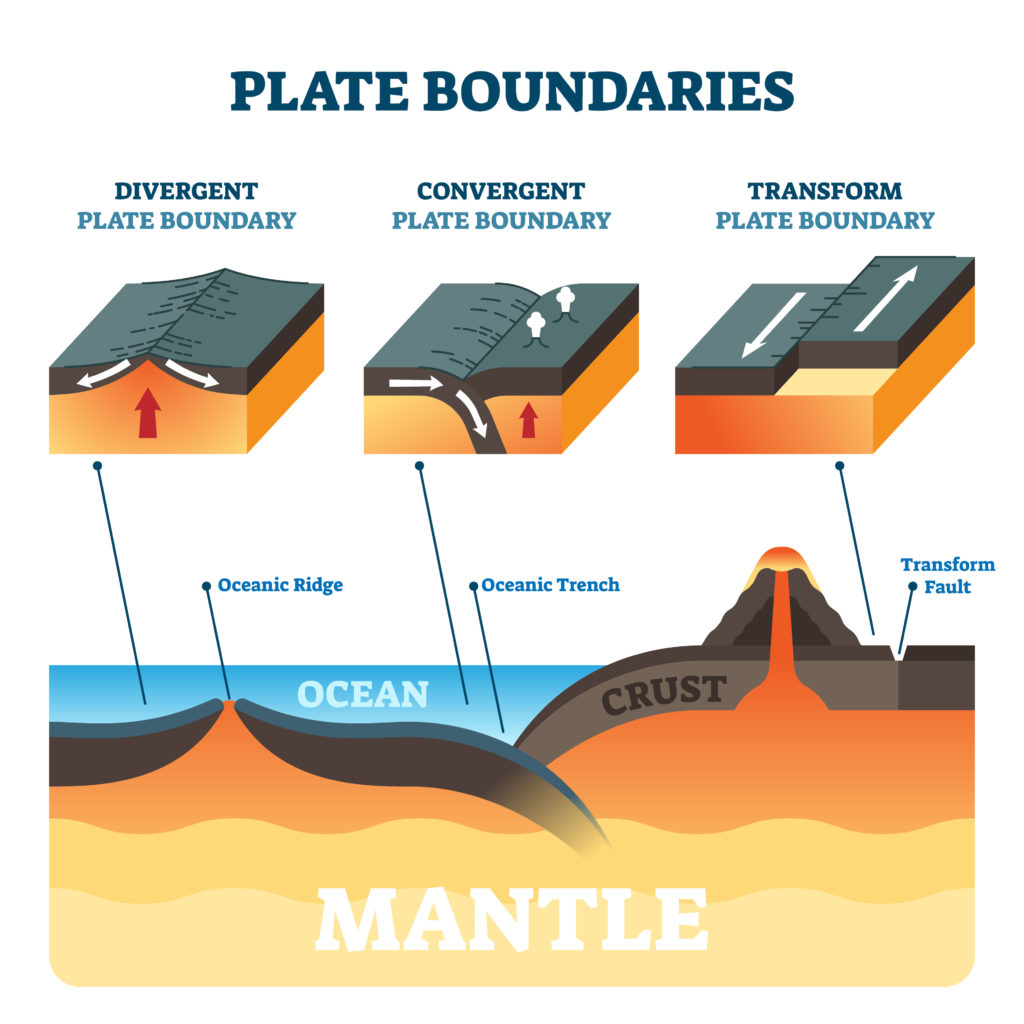- Filter By :
- Geography
- History
- Indian Heritage & Culture
- Indian Society
-
Q. With reference to the theory of plate tectonics, discuss the various types of plate tectonic boundaries around the world. (250 words)
19 Dec, 2022 GS Paper 1 GeographyApproach
- Start your answer by briefly describing plate tectonic theory.
- Discuss various tectonic plates boundaries around the world.
- Conclude accordingly.
Introduction
- A tectonic plate (also called lithospheric plate) is a massive, irregularly shaped slab of solid rock, generally composed of both continental and oceanic lithosphere.
- The lithosphere includes the crust and top mantle with its thickness range varying between 5-100 km in oceanic parts and about 200 km in the continental areas.
- The concept of Tectonic Plates was first introduced in 1967.
- A tectonic plate may be a continental plate or an oceanic plate, depending on which of the two occupies the larger portion of the plate.
Body
- The movement of the tectonic plates creates three types of tectonic boundaries:
- Convergent, where plates move into one another.
- Divergent, where plates move apart.
- Transform, where plates move sideways in relation to each other.
- Convergent Boundaries:
- A convergent plate boundary is formed when tectonic plates crash into each other. They are also known as destructive boundaries.
- These boundaries are often subduction zones, where the heavier plate slips under the lighter plate, creating a deep trench.
- Other than Subduction Zones, convergent plate boundaries also lead to mountain building and the formation of island arcs (Festoons).
- If both the convergent plates are oceanic, the volcanoes form a curved line of islands, known as an island arc, that is parallel to the trench.
- There are three ways in which convergence can occur:
- Between an oceanic and continental plates.
- Between two oceanic plates.
- Between two continental plates.
- Examples:
- The Washington-Oregon coastline of the United States is an example of oceanic-continental convergent plate boundary.
- Divergent Boundaries:
- A divergent boundary is formed by tectonic plates pulling apart from each other. They are known as constructive boundaries.
- Divergent boundaries are the site of seafloor spreading and rift valleys.
- At divergent boundaries in the oceans, magma from deep in the Earth's mantle rises toward the surface and pushes apart two or more plates. Mountains and volcanoes rise along the seam. The process renews the ocean floor and widens the giant basins.
- Examples:
- The best-known example of divergent boundaries is the Mid-Atlantic Ridge where the American Plates are separated from the Eurasian and African Plates.
- On land, giant troughs such as the Great Rift Valley in Africa form where plates are tugged apart.
- Transform Boundaries:
- A transform boundary is formed as tectonic plates slide horizontally past each other, but parts of these plates get stuck at the places where they touch.
- These boundaries are conservative because plate interaction occurs without creating or destroying crust.
- Hence, they don't produce spectacular features like mountains or oceans, but the halting motion often triggers large earthquakes, such as the 1906 earthquake that devastated San Francisco.
- These boundaries are conservative because plate interaction occurs without creating or destroying crust.
- In these areas of contact, stress is built which causes the rocks to break or slip, suddenly lurching the plates forward and causing earthquakes.
- These areas of breakage or slippage are called faults.
- Examples:
- The majority of Earth’s faults can be found along transform boundaries in the Ring of Fire.
- The San Andreas Fault in California is an example of a transform boundary, where the Pacific Plate moves northward past the North American Plate.
- A transform boundary is formed as tectonic plates slide horizontally past each other, but parts of these plates get stuck at the places where they touch.
Conclusion
The tectonic plates are not fixed but constantly move over the Asthenosphere as rigid units. Sometimes these plates collide, move apart, or slide next to each other which leads to Earthquakes or Volcanic Eruptions.
To get PDF version, Please click on "Print PDF" button.
Print PDF





